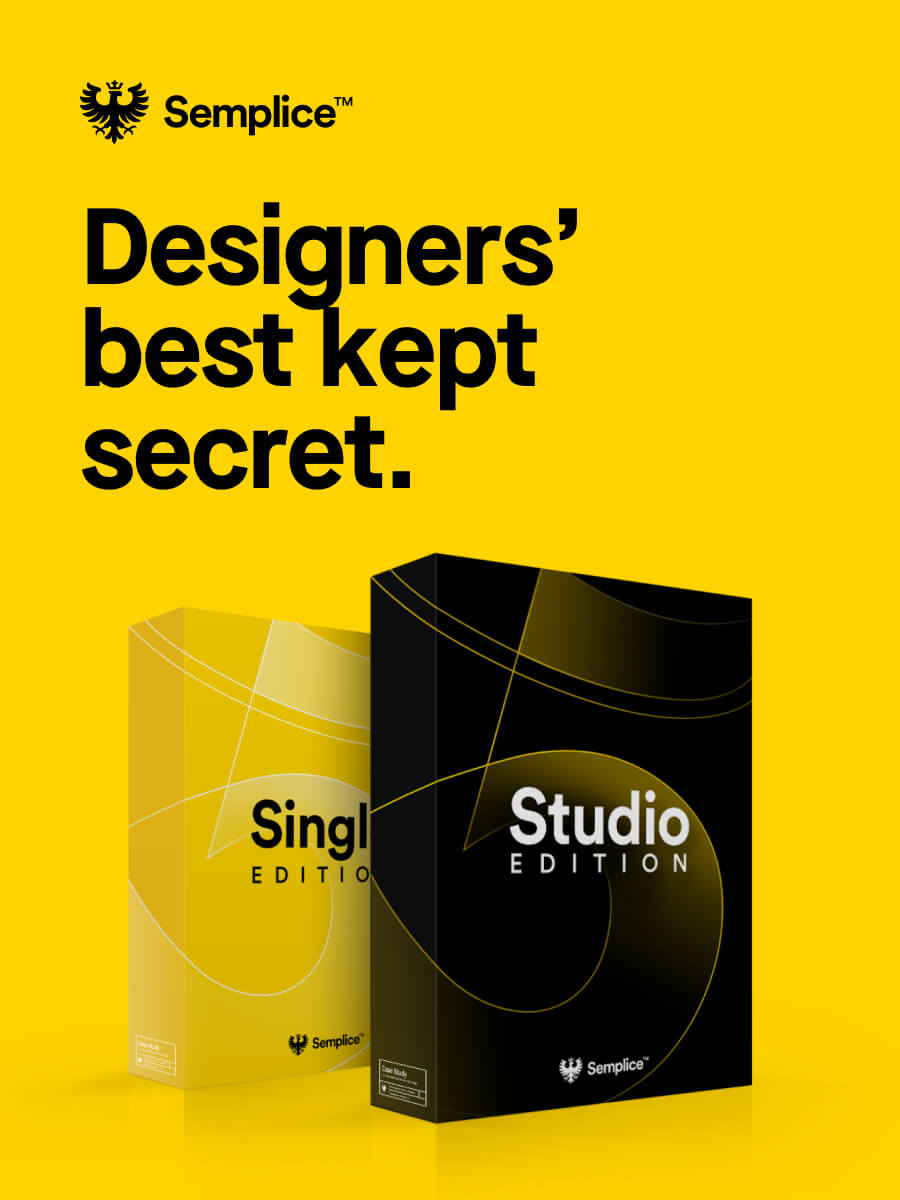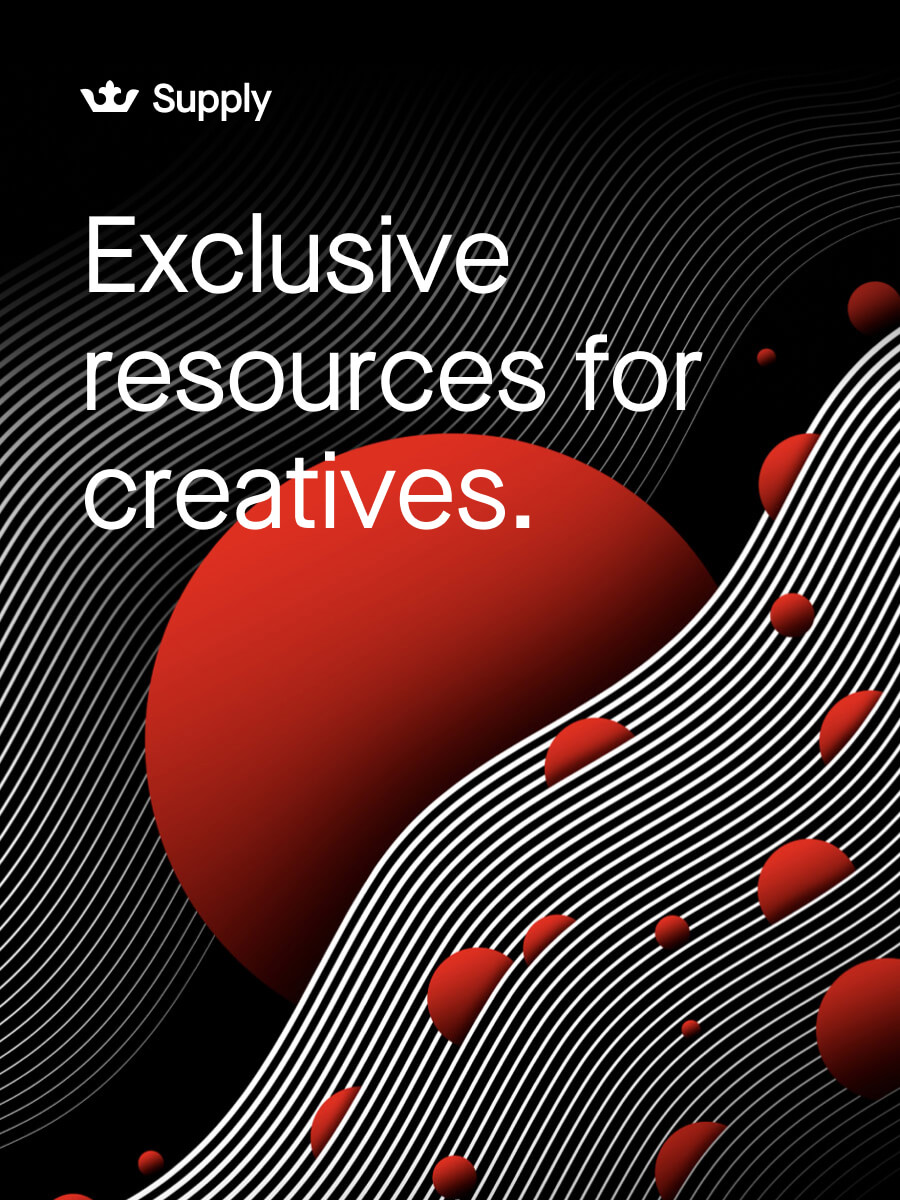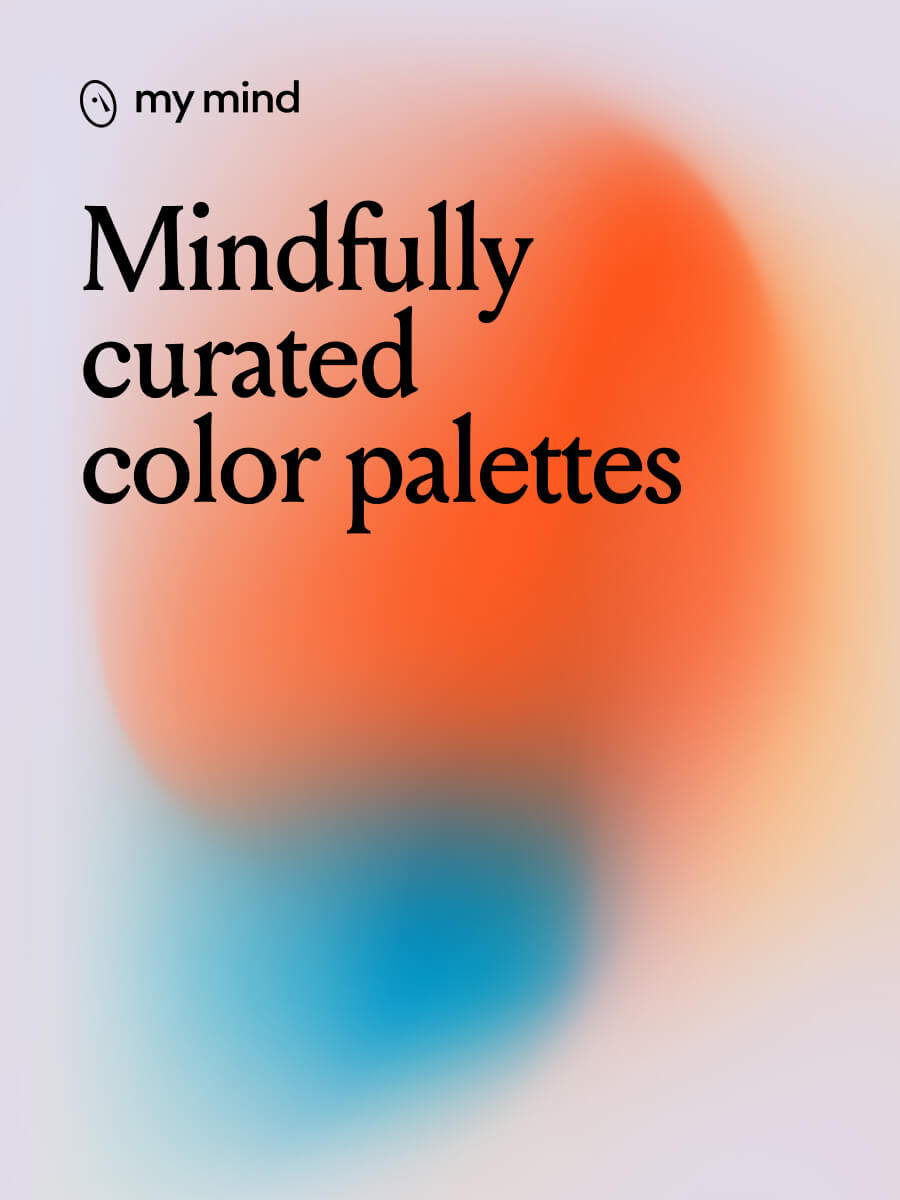For ONE magazine, print is far from dead
Published
We've been talking about the death of print for so long now, the conversation itself long dead. While its true media has moved mostly online, print has persisted. That's especially true for the fashion industry.
We first started following the story of ONE, a fashion photography magazine, in 2017. At the time, founder Nicole Gavrilles had been running the magazine singlehandedly for seven years as a print-on-demand publication (meaning issues are only printed, in low quality, as they are ordered). Now she's celebrating the 10th anniversary of her "side project" with some significant changes in direction and process. A big one: Going full print.
We caught up with Nicole to talk about the challenges and opportunities of embracing print in the fashion industry, how she manages to get all her shit done between her full-time job, and what lies ahead for the new ONE magazine.

It’s been three years since we last talked on DESK. What’s happening with ONE now? I hear rumors your printing process is changing and a redesign is coming. Tell us more.
Yes! A lot has evolved since the last time we talked. I continued my process of running the magazine on my own, but I came across more challenges along the way. Most of the challenges were around adding more written content or not having budgets to supply photographers with when shooting editorials for ONE. This always came back to the question I had to keep asking myself: How can I take on more work when I’m the only person running the magazine?
This year marks 10 years the magazine has been up and running. I’ve reflected on this milestone at the end of last year and the beginning of this year while also asking myself, what next and do I have it in me to keep going? A stylist I’ve worked with on a few past covers shared some interest in learning more about my process with running the magazine. After meeting up and us connecting so well, she and another photographer joined to help reshape the magazine’s next chapter.

We’ve been changing the process completely – from digital, to social and print. With our new mission statement for a better tomorrow; a cleaner, greener, more inclusive future. We’re now a womenswear fashion editorial magazine dedicated to sustainable and ethical production. This includes featuring only sustainable fashion and beauty brands as well as shifting our entire printing approach to be fully sustainable. With this new mission comes a new brand voice and aesthetic – something I’ve always wanted to take the magazine visually, and now have the moment to do so.
Print is, of course, a whole different game than digital. The costs increase, the planning process changes, the room for error is much smaller. Do you plan to finance the print version via something like Kickstarter, or will there be ads in this new version? And why do this now and not five years ago?
Print is a whole different game field. But now, communicating you’re printing the magazine, people take you more seriously. I wish there was an easier way but in the fashion world, this is what it takes. I always knew one day if I was going to take the next step, I had to work with a printer. We will have ads throughout the magazine which will finance a huge portion of the magazine. Any remaining balance, I’m planning to finance. And we’re splitting the costs of providing budgets to certain photographers to shoot stories for us.
Five years ago, I wasn’t mentally or financially capable of making this huge step. Also, the magazine wasn’t at the place I wanted it to be in 2015. I knew I needed people to help advance the magazine to where we’re at now, but that wasn’t available for me back then. Everything happens for a reason, and having two people help shift and grow the magazine now, was the right timing.
"We’re not just any other fashion editorial magazine anymore. We’re carving a niche path into the fashion industry that’s been lacking a much-deserved spotlight."

We’ve said print is dying for the last 10 years at least. But I think it’s only made publications like yours even more special, almost an art form. A printed mag now is a gift to an industry and a treasure for readers. Are you concerned at all about the reach/power of print, or do you see it the same way as I do?
I’ve definitely seen an interesting shift in some independent fashion publications in the past year or two. If presented and curated like a timeless art piece, it becomes more valuable to a follower and hopefully, becomes part of their collection.
We’ve received so much positive feedback and excitement about our new mission. I think that’s what makes our publication unique. We’ll be touching upon environmental issues within the fashion industry, on how designers and creators are rising above with innovative sustainable solutions. More people have shown interest in contributing because there’s a positive message attached to our new presence. We’re not just any other fashion editorial magazine anymore. We’re carving a niche path into the fashion industry that’s been lacking a much-deserved spotlight.

Before, you were doing every part of the planning and production process: Researching trends, planning issues and themes, selecting talent, coordinating and directing photoshoots, planning and editing stories. How is it working now that you have a small team of three?
It was definitely a handful, haha. Thankfully with having two editors now, we’ve divided up the work so each has their focus and checklist of items. A lot of the bones from the years of work I’ve put into the magazine were there, but we had to go in and refresh a lot of key areas such as the website, Instagram and media kit. But we also had to create some new organizational methods to track our progress on the stories for print and online, finances, etc. A lot of the day-to-day communication with contributors and running the Instagram are off my plate, since my editors handle that now.
To be honest, we’re taking everything day by day. Since this is our first time working on a printed and distributed issue, we’re learning things as we go, connecting to people providing more insight and knowledge into the business/marketing side of the magazine and working on solidifying an LLC at the moment. This process is definitely an experiment and once we get through launching this issue, we’ll have our process in a better place for the next one.

Ten years is a long time to work on the same side project. How have you managed to keep it fresh over the years? Did you ever hit points where you felt you had to shake things up, or has it been a steady evolution all along?
Ten years is indeed a long time to work on the same side project.
Looking through the past 19 issues, a lot of them definitely feel dated and more relevant during the time they were released. It took me a long time to get the editorial design and photography aesthetic to where I wanted it to be. I wanted to shake things up every issue but I was always faced with, how much time do I have to get this out?
Most of the time, I didn’t have the time to update the editorial design, so it stayed as-is for years and it always bothered me.
I would say the moment I finally sat down and redesigned the magazine was Issue No.16, which was released September 2018. Around that time, I quit my full-time job at a design agency where I spent over six years of my career, and then joined Squarespace as a product designer. In between jobs, which was 2.5 weeks, I spent the entire time redesigning the magazine. As much as I would have wanted to spend that time doing something else, it was my chance to make that visual upgrade I was yearning to work on.
"For the fashion industry, true print is still considered the most important. 'If it’s not in print, we’re going to pass.'"

I always enjoy reading earlier essays I’ve written here on DESK, because I can see clearly how my writing and my mind has changed and grown over the years. Looking back on your catalog of work, do you see any issues or articles that mark a change in how you work or how you think?
I think my previous issue, No.17, was where I could see things coming together more seamlessly. When I reworked my process two years ago, I outlined the areas that caused a lot of stress and redefined a new process to alleviate that stress from occurring. I became way more on top of things, starting earlier on checking off tasks by process of elimination, instead of leaving a lot of tasks towards the end. It helped streamline my process to work faster and more effectively.

How have you seen the magazine itself evolve, aside from its format? Has its style or voice developed in any noticeable way?
The style has evolved immensely. It evolved in the direction I wanted it to. It took a bit of time to get it there but I’m very happy with where we’re taking it now. The voice of a publication’s brand is an interesting piece and when working on this rebrand, we noticed the magazine doesn’t have a voice. Because the magazine was primarily imagery with either 1-2 articles, there was no place for it. The magazine stood as a platform for emerging fashion and photography talent, but I never had the time to establish its voice. Now with the rebrand, we have a clear voice and mission statement moving forward, where a true community can finally be built.

You’ve had a close eye on the fashion industry over the last decade, which seems to move on its own timeline – incredibly fast yet sometimes circular. How has fashion, or even just fashion photography, changed since you first started publishing in 2010?
What’s interesting is, the fashion industry hasn’t changed too much but fashion photography has.
Within both, social media has changed everything. It’s the main platform you use to find emerging photographers, stylists, models. It’s the main platform to create and develop connections, and it’s the main platform that gives everyone access to “who's who” and “who knows who.”
For the fashion industry, true print is still considered the most important. “If it’s not in print, we’re going to pass.”
The process of making things happen is truly about who you know, and that still hasn’t changed within the fashion industry. For years I was able to run and produce issues without having to jump hoops just to be noticed, mostly because I didn’t care if people knew of me or not. The magazine spoke for itself over the years and it spread naturally by word of mouth. I was in no rush either; I just let things happen and come my way, and went from there.

In our last interview, we talked about the demands of work/life/side project, and how you were making an effort to balance your schedule and make time for yourself outside of work. What’s your view on that these days?
Well, it's an interesting time these days with being in quarantine in Brooklyn for the past four months. I’ve had a more difficult time during quarantine with a balance between work and life.
Once the lockdown went into place in New York City, my work for my full-time job tripled. I’m in back to back meetings filling up my days with barely any time to get any work done. This has pushed me to work after hours to get actual work, done plus also being spread thin across multiple projects. I think I’ve been burnt out for the past few months? Haha, I don’t even know anymore.
I’m being honest when I say this time hasn’t been easy for me. But it hasn’t been easy for anyone these days. I’m trying to do what I can by staying active, cooking, seeing friends and any other simple thing that provides some relaxation, like laying out in Prospect Park catching up on a good read.

You’ve reached out to so many people and coordinated so many projects online at this point, I imagine you are a master at the cold email, or just remote project management in general. Any practical tips for reaching out to people you don’t know, managing “creative types” online and getting shit done?
It’s always trial and error, figuring out what works and what doesn’t. First define the process that works best for you and once proven successful a few times, write down and stick to your process (reuse and improve on as you go).
Setting myself goals is how I get shit done. If I set up a personal goal to have all images and content sent to me by X date, then that’ll give me a few weeks to construct the issue and release it by X date. Once you’ve got that down, it becomes a mental memory at that point.
For reaching out to people you don’t know, you’d be surprised how receptive people are if you add context in your approach. If you make your message seem more approachable to this person you’re cold-emailing, it’ll show that you care and spent time formatting this email for them. Adding touches of thought, research, care and a bit of your personality is a key to cold emailing / Instagram DM success.

In my experience, side projects always lead to more side projects, new opportunities and new relationships. What was the most unexpected thing to come from your work with ONE?
I think the most unexpected thing was one of my professors asking me to come visit and give a talk about my design career and how the magazine came to life. In early February of this year, I flew down to my alma mater, Ringling College of Art and Design, and did just that. It was a really special moment for me to connect with my professors and the place that gave me a platform to discover my passion and grow my skills in design.
I think I’ve learned so much throughout these past 10 years that I now enjoy helping and encouraging people to discover and grow their passions.

Is there anything else you’ve been wanting to do with the mag that’s still on the horizon? For example, I’m curious if you’ve ever considered (or already done) paid partnerships with fashion brands or designers to feature their clothing lines and fund the magazine.
You’re always one step ahead of me, Tobias! Yes, we are going to be working on expanding our online social presence, and paid partnerships is one of the main areas we’re going to tackle after the launch of this issue and in 2021.
You started ONE out of a desire to champion your friends and spotlight their work. Is that still your main goal today? What’s motivated you to continue doing this for the past 10 years? What makes it rewarding?
With our new mission, it’s still in our DNA, however, we are primarily focusing on providing a spotlight for sustainable and ethical brands moving forward. We will continue to collaborate and highlight work from emerging brands, but our new area of focus will make us stand out within the world of numerous fashion editorial publications.
I’m more motivated and passionate about this new chapter because we’ve established a purpose and meaning to the magazine that was lacking before. I’m very passionate about environmentalism and climate change. And now that we’ve established this new mission, I believe our new vision can truly make a difference by helping creatives and educating viewers about sustainability within fashion. We’re also planning to donate all proceeds to an environmental organization/non-profit.

What advice do you have for those of us who dream of doing a similar side project (essentially a second job) we’re passionate about, but feeling unsure where to begin or how to manage it all (the finances, time, resources, energy, etc)?
Start small. It’s easier to grow a business/hobby/side-project when you take baby steps. Putting all your eggs in one basket all at the beginning could be super risky. Think of it as launching a new product – you want to test how your users interact with it first, then keep iterating and slowly expanding from there. This will help with discovering your process and how it works best for you, the resources and tools you'll need and the amount of time you'll dedicate per week.

What are a few of your favorite features in ONE from the last decade?
Most recently, we interviewed and photographed the recent collection of handmade organic materials by designer Signe Rødbro of Signe. She took her production to Turkey where she opened Moon Tekstil, a sustainable and ethical factory in Izmir that offers fair wages, transportation, lunch and a comfortable, happy place to work for its employees.
Beginning of this year, I loved this story by Martina Keenan. Her effortless style captures such visually captivating moments.
I will forever cherish this stunning cover story for Issue No.13 by Manolo Campion, featuring Claudia Li.
Issue No.18 of ONE magazine, featuring the rebrand and ONE's new mission dedicated to sustainable and ethical production, will be out this fall. Follow @one_magazine for news and, of course, always-beautiful fashion photography.
Read more
© 2021 House of van Schneider LLC
All rights reserved.
MORE ABOUT TVS
About DESK
Curated mixtapes
DESK partnerships
BECOME A FRIEND
Twitter
Dribbble
Instagram
We're sorry, our pandas couldn't find any articles
Why don't you take a look at popular topics like
Design, Productivity or Self-Improvement?








